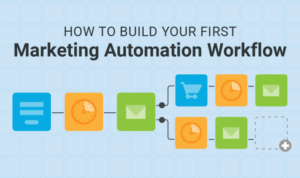Using Gamification in Marketing opens up a world of interactive strategies to captivate consumers and boost brand engagement. Get ready to dive into the realm of gamified marketing campaigns that take customer interaction to the next level.
In this exciting journey, we’ll explore the concept of gamification in marketing, its benefits, and how it can revolutionize consumer engagement.
Introduction to Gamification in Marketing: Using Gamification In Marketing

Gamification in marketing is the practice of using game design elements and principles in non-game contexts to engage and motivate customers. By incorporating elements like challenges, rewards, and competition, marketers aim to make their campaigns more interactive and enjoyable for consumers.
Examples of Gamification in Marketing, Using Gamification in Marketing
Here are some examples of how gamification can be used in marketing strategies:
- Points-based Systems: Rewarding customers with points for completing certain actions, which can be redeemed for discounts or prizes.
- Leaderboards: Displaying rankings of customers based on their engagement with the brand, encouraging friendly competition.
- Interactive Quizzes: Creating fun quizzes related to the product or service to educate customers while keeping them entertained.
- Progress Bars: Showing customers their progress towards a goal or reward, motivating them to continue engaging with the brand.
Benefits of Incorporating Gamification in Marketing Campaigns
There are several benefits to incorporating gamification in marketing campaigns:
- Increased Engagement: Gamification makes marketing more interactive and enjoyable, leading to higher levels of customer engagement.
- Improved Brand Loyalty: By offering rewards and incentives, brands can build stronger relationships with customers and increase loyalty.
- Data Collection: Gamification can be used to collect valuable customer data through interactions and engagement with the brand.
- Enhanced Customer Experience: Gamified experiences can make the customer journey more fun and memorable, leaving a positive impression of the brand.
Understanding Consumer Engagement through Gamification
Gamification plays a crucial role in enhancing consumer engagement by tapping into people’s natural desire for competition, achievement, and rewards. By incorporating game elements such as points, badges, leaderboards, and challenges into marketing strategies, businesses can create a more interactive and engaging experience for their customers.
Enhancing Interaction with Consumers
Gamification allows consumers to actively participate in the brand’s story, rather than being passive recipients of marketing messages. This active involvement fosters a stronger emotional connection between the consumer and the brand, leading to increased loyalty and advocacy.
- Gamified loyalty programs: Companies like Starbucks and Nike have successfully used gamification to reward customers for repeated purchases, encouraging loyalty and engagement.
- Interactive social media campaigns: Brands like Coca-Cola and McDonald’s have utilized gamification elements in their social media campaigns to encourage user participation and sharing.
- Mobile apps with gamified features: Apps like Duolingo and Nike Training Club leverage gamification to make learning a new language or exercising more fun and engaging for users.
Implementing Gamification Strategies

Implementing gamification strategies in marketing can be a fun and effective way to engage customers and drive business growth. By incorporating game elements into your marketing campaigns, you can create a more interactive and rewarding experience for your target audience. Here are some steps to design and implement gamification strategies in marketing:
Different Gamification Techniques
- Points and Badges: Reward customers with points and badges for completing certain tasks or reaching specific milestones. This can help encourage repeat engagement and loyalty.
- Leaderboards: Create leaderboards to showcase top performers and encourage healthy competition among customers. This can drive engagement and motivate users to participate more actively.
- Challenges and Quests: Design challenges and quests that require customers to complete various actions to earn rewards. This can keep customers engaged and excited to progress through the game.
- Rewards and Prizes: Offer attractive rewards and prizes to customers who achieve certain objectives or milestones. This can incentivize participation and drive customer loyalty.
Aligning Gamification Strategies with Marketing Goals
- Identify Objectives: Clearly define your marketing goals and objectives to ensure that your gamification strategies are aligned with your overall business objectives.
- Understand Your Audience: Consider the preferences and behavior of your target audience when designing gamification techniques to ensure they are engaging and relevant.
- Measure Success: Track and analyze key performance indicators (KPIs) to evaluate the effectiveness of your gamification strategies and make necessary adjustments to optimize results.
- Iterate and Improve: Continuously test, iterate, and improve your gamification strategies based on feedback and data insights to enhance customer engagement and drive business outcomes.
Measuring Success and ROI of Gamification in Marketing
Gamification in marketing can be a powerful tool to engage consumers, but it’s essential to measure its success and return on investment (ROI) to ensure its effectiveness.
Key Metrics to Measure Success
- Number of Active Users: Tracking the number of users actively participating in gamified marketing campaigns can indicate the level of engagement.
- Time Spent on Platform: Monitoring the time users spend on the gamified platform can show how engaging and appealing the content is.
- Conversion Rate: Analyzing the conversion rate of users who interacted with gamified elements can demonstrate the impact on sales or other desired actions.
- Retention Rate: Measuring how many users continue to engage with the gamified content over time can indicate its long-term effectiveness.
Tracking and Analyzing ROI
- Cost of Implementation: Calculating the expenses involved in creating and running gamification campaigns compared to the benefits they generate is crucial for determining ROI.
- Revenue Generated: Assessing the direct revenue generated from gamified marketing efforts can help quantify the financial impact of these campaigns.
- Customer Lifetime Value: Estimating the long-term value of customers acquired through gamification can provide insights into the overall ROI of these strategies.
Case Studies
One successful example is McDonald’s Monopoly game, which significantly increased customer engagement and sales by offering rewards and incentives through gamified elements.
Another case is Nike+, a gamified fitness app that boosted user interaction and loyalty by incorporating challenges, rewards, and social competition.





